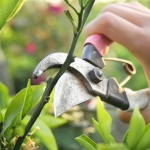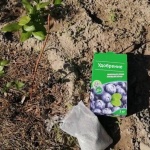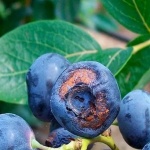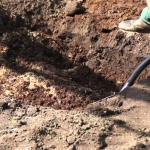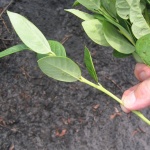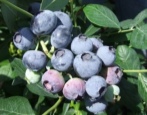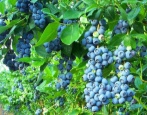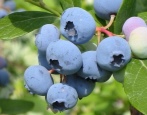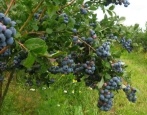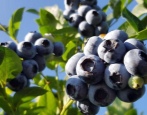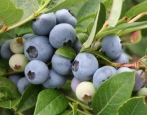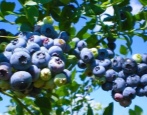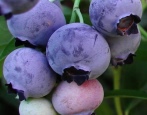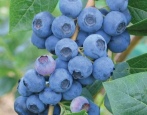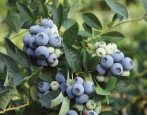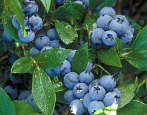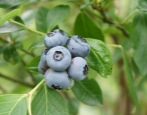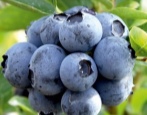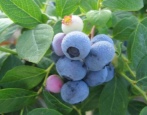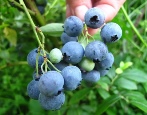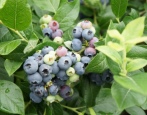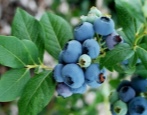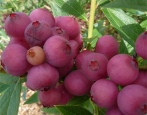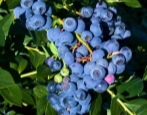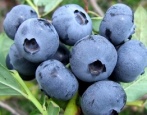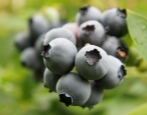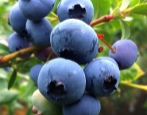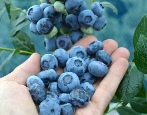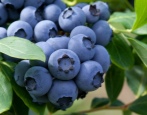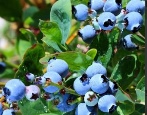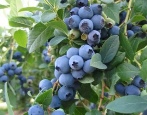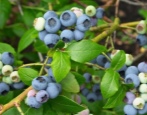
- Authors: USA
- Ripening terms: mid-season
- Growth type: tall
- Bush height, m: 1,8-2
- Taste: good, sweet and sour
- Yield: high
- Average yield: 6-9 kg per bush
- Fruit size: large
- Fruit shape: spherical
- Fruit color: matte blue
Blueberries are known for their many positive characteristics. Regular consumption of the fruit has a beneficial effect on health. Separately, they note the high decorative qualities of shrubs, which are perfect for creating a hedge or as an independent decoration of a garden plot.
One of the most popular varieties in Russia is Toro blueberry. This variety has certain characteristics that should be considered for high yields.
Description of the variety
This variety is considered tall and grows up to 1.8-2 meters. Due to the compact structure, the plants will not take up much space on the site. The density of the crown is medium. To give the shrubs an attractive appearance, pruning is regularly performed, during which the shoots are thinned out.
Leaves are medium in size, slightly tapering at the ends. The color is deep green. The shape is round, elliptical.
Fruit characteristics
Agronomists note the large size of the berries in a standard spherical shape. In weight, each berry gains about two grams. Color - blue, surface texture - matte. There is a medium-density waxy bloom. The berries are collected in long clusters, very similar to grapes.
The separation is dry, allowing for quick and convenient harvesting. The place of attachment of the peduncle is small. The berries remain on the fruiting shoots even after the final ripening, so it is not necessary to pick them immediately after filling. The harvest is stored for 10-14 days. Toro fruit is rich in minerals, vitamins and amino acids. All of these ingredients are essential for great well-being and good health.
Taste qualities
Sweet and sour berries were enjoyed by most gardeners who cultivated this variety. The pleasant taste of the fruit emphasizes the light and delicate aroma characteristic of blueberries. Due to its good gastronomic qualities, the fruits are not only eaten in their natural form, but also used to embody any culinary ideas. Blueberries are often added to sweet baked goods.
Ripening and fruiting
Shrubs bear fruit in the period from July 20 to August 10. The date may differ in different climatic regions. Under favorable weather conditions, the horticultural crop bears fruit until mid-September without reducing the quality of the crop.
Yield
The yield indicator of the Toro variety is noted as high. On average, it is possible to collect from 6 to 9 kilograms of fruits from one plant. Fruit transportability is average. When transporting fruits for a long time, you need to be very careful so as not to damage the crop. The purpose of the fruit is universal.
A mechanical method for picking blueberries will not work. It is advisable to pick the fruits by hand so as not to damage them. The harvest is placed in a clean and dry container. Shrubs bear fruit every season, giving out a regular crop without interruption.
Self-fertility and the need for pollinators
A rich harvest depends largely on successful pollination.Toro blueberries are self-fertile, so pollinators do not need to be planted next to them. If you provide proper care for the plants, they will delight you with a stable and high-quality harvest and without additional pollination measures.
Despite self-fertility, some gardeners are sure that other fruit varieties should be planted nearby to achieve maximum yield. The main condition is for berry bushes to bloom at the same time. And there is also an opinion that cross-pollination will negatively affect the gastronomic qualities of the fruit, and should be abandoned.
If blueberries will not be grown commercially, you can safely refuse to plant additional crops. In this case, you will not have to thicken the planting, and the yield will be regular even without it.
Growing and care
Growing any horticultural crop begins with the selection of a suitable site. Pay attention not only to the composition, but also to the structure of the soil and other characteristics. Blueberries grow well on nutritious and drained soils with an acidity in the range of 3.8-4.8 pH. If necessary, you need to acidify the earth with citric acid. Dissolve 3 teaspoons of the powder in 10 liters of water.
Ordinary table vinegar (9%) is also suitable. To prepare a solution for a bucket of water, use 90-100 milliliters. You cannot constantly use this acidification option, but in order to quickly cope with the problem, this method is ideal. The composition for acidifying the soil is prepared from budget components that can be found in any kitchen.
No specific recommendations and timing for watering have been developed for blueberries. Summer residents rely on weather conditions. The main thing is that the soil on the site is constantly in a moderately moist state. It is important to maintain a balance between stagnant moisture and drought. In the heat, the shrubs are watered more often so that a rough crust does not appear on the surface of the earth. Cracks also indicate a lack of water.
It is recommended to water the blueberries with slightly acidified water every 14 days. To prepare the composition, one of the above oxidants is used. Proportions - 1.2-1.5 grams of product per liter of clean water. The rest of the time, the shrubs are irrigated with settled water.
To preserve moisture in the upper layers of the soil, especially in prolonged heat, the ground around the trunk circle is covered with a thick layer of mulch. We recommend using sawdust or pine bark. The layer thickness is 10 centimeters.
An important element in the care of berries is feeding. Shrubs are fertilized three times throughout the season. Mineral complexes and organic compounds are used. The first time the culture is fed with the arrival of spring, using 15 grams of carbamide or ammonium sulfate (the optimal consumption per adult plant). The same top dressing is used about a week before flowering. If the shrubs are more than 4 years old, the dosage should be doubled.
Mixtures with a high nitrogen content are added diluted. On average, no more than 2 grams of the substance are consumed per liter of water. Potash mixtures such as potassium sulfate are recommended during fruiting. For an adult plant, 30 to 60 grams of the component will be enough.
Nitrogen fertilizers cannot be used, as these are fertilizers with a high nitrogen content. Instead, mineral compositions are used: calcium monophosphate, magnesium sulfate and other common options.
Organic matter that is applied undiluted will harm the plants. Manure or fresh bird droppings leave burns on the roots. These components must be reheated before application. In the spring, organic matter is evenly scattered under berry bushes. Ready-made dressings are also widespread. In stores, you can find fertilizers specially formulated for blueberries and other fruit crops.
The Toro variety is not afraid of frosts up to 34 degrees Celsius, so it is not necessary to cover the plants before winter arrives. And also blueberries are not afraid of fungal infections and most common diseases.

